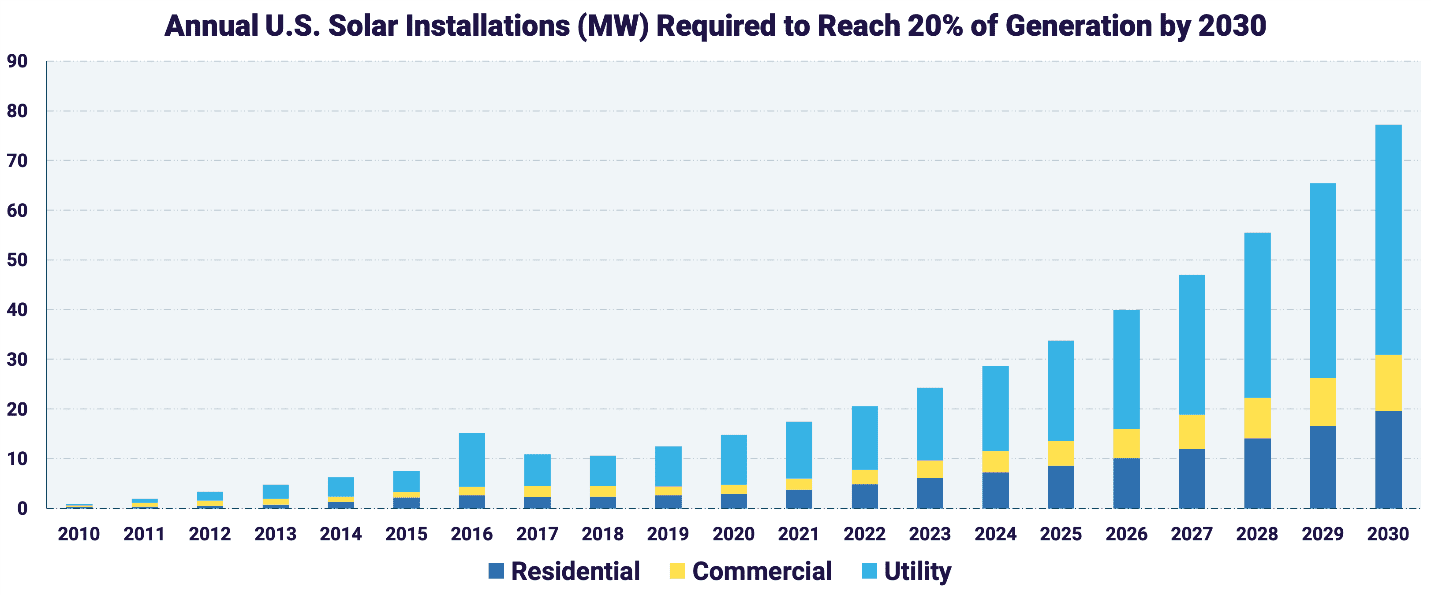SEIA Unveils ‘Roadmap’ for Increased Solar Power Generation
Credit to Author: Darrell Proctor| Date: Mon, 23 Sep 2019 18:11:46 +0000
The post SEIA Unveils ‘Roadmap’ for Increased Solar Power Generation appeared first on POWER Magazine.
The Solar Energy Industries Association (SEIA) on Sept. 23 released what it calls a roadmap for solar power, among the group’s first steps into a 10-year period that SEIA has dubbed the “Solar+ Decade.”
SEIA on Monday in a news release said its initiative puts solar power on a path to provide at least 20% of U.S. power generation by 2030, up from 1.6% in 2018, according to data from the U.S. Energy Information Administration (EIA). SEIA’s plan, which the group discussed at the North America Smart Energy Week / Solar Power International event that began Monday in Salt Lake City, Utah, is a 10-year “strategic vision for the solar industry that highlights both opportunities and systemic challenges the industry will need to overcome to reach its goals.”

Abigail Ross Hopper, CEO of the Solar Energy Industries Association
Abigail Ross Hopper, president and CEO of SEIA, said, “The Solar+ Decade represents opportunity and a paradigm shift as we transform energy use in America. When we hit this goal, by 2030 we will more than double our workforce and add $345 billion in private investment, all while offsetting electricity sector emissions by 35%. But we can’t get there on momentum alone. We’ll need policies, aggressive collaboration, and action from every member of the industry to make these goals a reality.”
SEIA’s plan notes exponential growth in U.S. solar installations from residential, commercial, and utility projects (Figure 1) in order to reach the 20% goal. The roadmap highlights the benefits increased power generation from solar, and notes the policies, collaborations, and growth management the industry will need to hit that target.

1. This chart from SEIA shows the annual growth needed in U.S. solar installations to hit a target of 20% of the nation’s power generation from solar power by 2030. Courtesy: Solar Energy Industries Association
The group in its news release detailed what the solar industry will need to consider over the next decade:
- Collaborations: Cohesive solar industry and external partnerships will be key to the industry’s success. Partnerships with storage, wind, and other technologies will be critical to advance grid infrastructure and change how power is generated, distributed, and consumed.
- Market Accelerators: Economic and political forces outside of the solar industry, such as energy storage, carbon reduction goals, and the further electrification of the U.S. economy, have their own momentum and solar will need to continue to ride this wave of success.
- Market Levers and Policy Drivers: Reaching 20% solar generation by 2030 will depend on a variety of factors, including the industry’s ability to find new opportunities for cost reductions and to move or change policies that can drive growth. The industry will need to streamline permitting challenges to reduce costs, continue its push on net energy metering and other state-level policy in emerging markets, and pass an extension of the ITC to continue growth.
- Growth Management: The industry must consciously build a strong foundation to support itself, including proactively addressing cybersecurity, recycling and land use challenges, as well as grid modernization and the inclusive, equitable distribution of opportunities in solar.
Said Hopper: “As the solar industry prospers, we must be thoughtful about who’s benefiting from solar and the enormous economic and climate benefits it will bring. Together we can show that the Solar+ Decade is a story of inclusive growth that will both lift our communities and tackle our pressing climate challenges.”
—Darrell Proctor is a POWER associate editor.
The post SEIA Unveils ‘Roadmap’ for Increased Solar Power Generation appeared first on POWER Magazine.